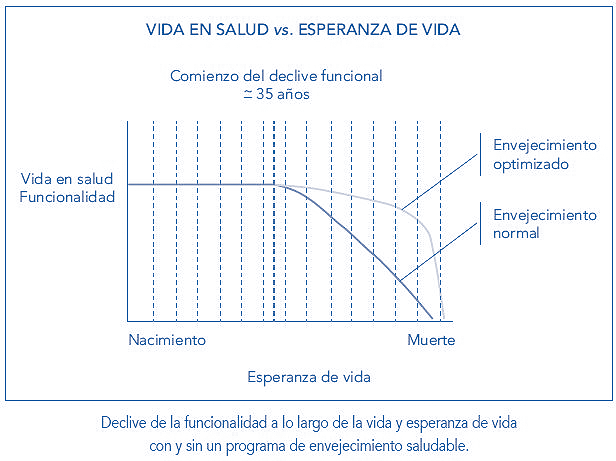Aging and longevity
Aging is a natural and inevitable process, a complex process influenced by multiple factors and determined by both genetics and lifestyle habits. Although traditionally, each factor has been assigned a 30% and 70% impact, respectively, some recent research suggests an effect of 50%.
The sustained increase in life expectancy raises the question of how long a person can live in good health, with the ability to lead an independent life and contribute to society. The World Health Organization (WHO) coined the term “active aging” to combat negative stereotypes and images about old age. It’s not about the number of years a person will live, but rather the time during which they can enjoy life and contribute to society in good conditions. The term “healthy life expectancy” (HLE) was coined to quantify this measure.

Although physical decline is inevitable, recent advances in molecular, cellular, and genomic biology allow us to develop strategies to achieve healthy longevity by modulating aging. Pathologies associated with aging (cardiovascular, oncological, neurodegenerative, and endocrine-metabolic) eventually affect us, but our ultimate goal is to prevent premature aging through preventive measures. Preemptive action is essential to delaying physiological aging, increasing disease-free time, and reducing the period of chronic diseases associated with aging by up to a decade.

Información y conceptos
Life expectancy
Years a newborn can expect to live if age-specific mortality patterns at birth remained the same throughout their life.
Healthy life expectancy
It is defined as the average number of years a person can expect to live in good health (in the absence of functional limitations or disability).
